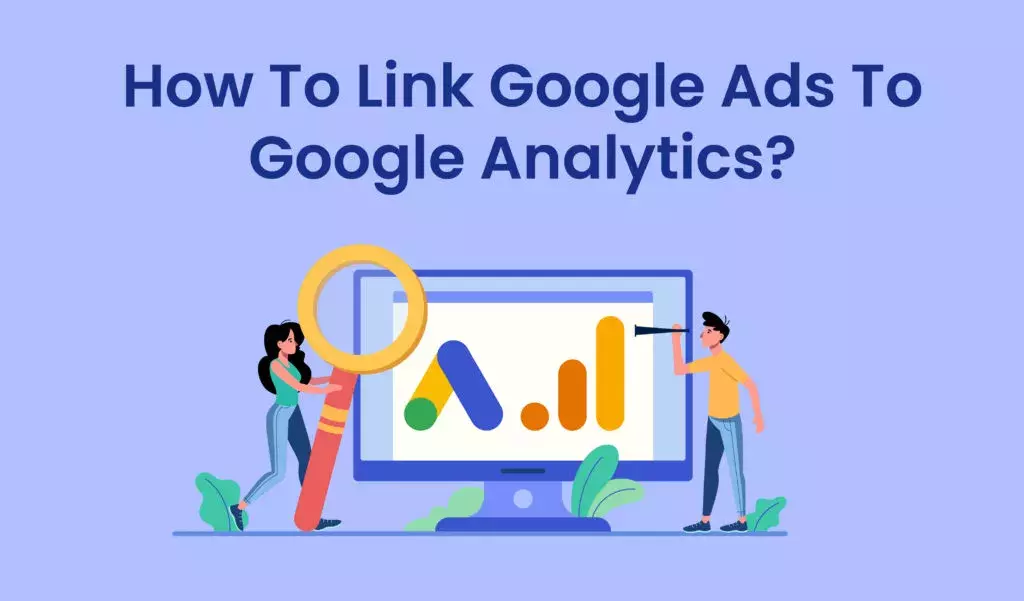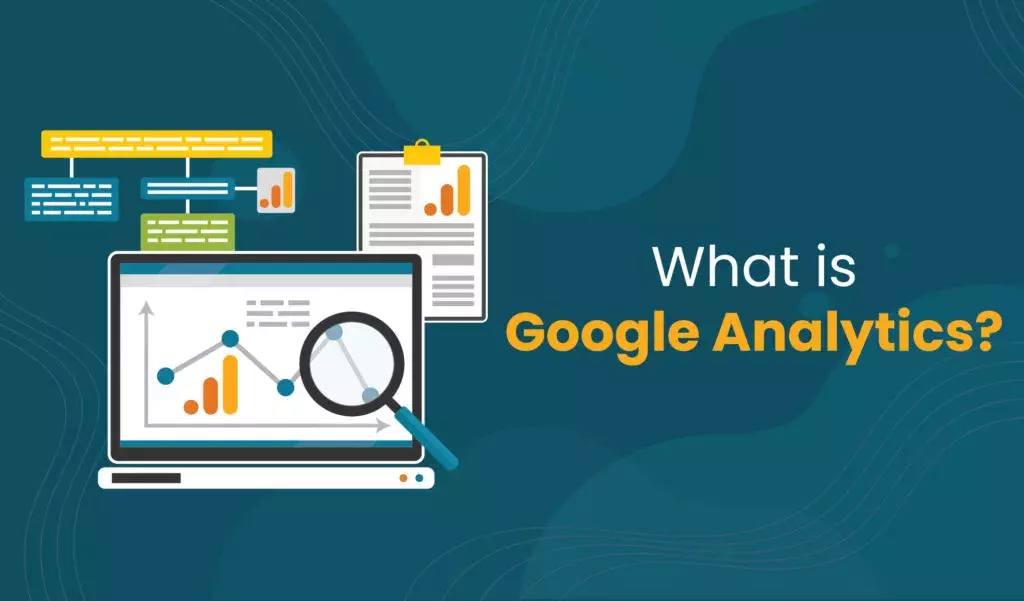How to link Google Ads to Google Analytics?
Table of contents

To better understand the paid traffic generated by Google Advertising campaigns, Jacksonville Advertising Agency recommends that clients always link their Google Advertising account to their Google Analytics account. This allows you to improve your view and analyze incoming traffic from Google Ads.
Linking the Google Ads account to the Google Analytics account adds a layer of analysis because you can import data from Google Analytics into your Google Ads account and view Google Ads performance data in Google Analytics say the Digital Marketing Jacksonville experts. Google AdWords provides its data layer within the Google Ads dashboard, but you can link your accounts to see additional metrics such as paid user bounce rates, pages/sessions, and session counts. You can also see other conversion data and assist conversion. It’s possible that a user who accessed your site through paid advertising left your site, and then returned as organic traffic. This additional data layer shows additional ROI and helps you extend your campaign to more types of remarketing ads. Once your Google Advertising account is linked to Google Analytics, you’ll be able to:
- Show your ad performance and your website’s metrics in the Google Ads report on Google Analytics.
- Import goals and e-commerce data from Analytics into Google Ads.
- Import Google Analytics data such as bounce rate, average, etc. Google ads session time, etc.
- Use analytics remarketing and dynamic remarketing in Google Ads remarketing.
- Check out the Google Analytics multi-channel report.
You don’t need to deploy Google Ads and Google Analytics. The first is a great advertising system that can display ads on the Google Display Network, YouTube, and Search Networks. Nevertheless, it can be categorized as one of many advertising channels that help carry out marketing strategies. Meanwhile, Google Analytics collects information about the users who visit your website. With Google Analytics, you can categorize user segments by traffic source or website behavior. You can even easily integrate these features with Google Ads.
In this article, we will go through
- What is Google Ads?
- What is Google Analytics?
- How do link them together?
- What data can be imported and exported after integration?
What is Google Ads?

Google Ads is Google’s online advertisement program. With Google Ads, you can create online ads to reach precisely when you’re interested in the products and services your users offer. Google Ads is merchandise that you can use to encourage your business, sell products and services, increase awareness, and increase traffic to your website. Because your Google Ads account is managed online, you can create and modify your ad campaigns at any time, including ad copy, settings, and budget. There is no minimum cost requirement, and you set and manage your budget. Choose where you want your ads to appear, select a comfortable budget, and easily measure the impact of your ads.
Google Ads displays your ads to potential leads and customers who are curious about the product or service state the Digital Marketing Jacksonville experts. Advertisers bid on seek terms or keywords, and the winner of that bid is placed at the top of the explore results page, YouTube video, or related website, depending on the type of ad campaign you choose. Many factors affect your ability to create effective, high-performance Google ads. Marketers have three options for bidding.
- Cost-per-click (CRC): The amount you pay when the user clicks on the ad.
- Cost-per-mille (CPM): The amount you pay for every 1000 ad impressions.
- Cost per engagement (CRE): The amount a user pays when performing a particular action on an ad (subscribing to a list, watching a video, etc.).
High-quality ads can lead to lower prices and better ad position.” Scores range from 1 to 10, in which 10 is the highest score. The higher the score, the higher the rank, and the less you need to spend on conversions. Combining the Quality Score and bid creates an ad rank (where your ad appears on your search results page). And when a user sees an ad and clicks, the marketer pays a small fee for that click (hence a click charge). The moreover users who click on a marketer’s ad, the more likely they will reach their ad goals.
What is Google Analytics?

Google Analytics is a web analytics assistance that provides statistics and essential analytics tools for search engine optimization (SEO) and marketing objective. This service is a section of the Google Marketing Platform and is free to use by anyone with a Google account say the experts from the Digital Marketing Agency Jacksonville. Google Analytics is used to track the performance of your site and collect visitor insights.
It allows organizations to identify top sources of user traffic, measure marketing activity, and campaign success, track goal achievement (purchases, adding products to shopping carts, etc.), and identify patterns and trends in user interaction. It helps you identify and retrieve other visitor information as demographic data. Small and medium-sized retail websites frequently use Google Analytics to capture and analyze a variety of customer behavioral analytics that can be used to improve marketing campaigns, increase website traffic, and retain visitors.
Google Analytics comprise features that can help users identify trends and patterns in how visitors employ their websites. Features facilitate data collection, analysis, monitoring, visualization, reporting, and integration with other applications. These features include:
- Data visualization and monitoring tools display data changes over time, including dashboards, scorecards, and motion charts.
- Data filtering, handling, and funnel analysis.
- Predictive analytics, intelligence, and anomaly detection.
- Data collection application program interfaces (APIs).
- Segmentation for subset analysis, such as conversions.
- Email-based collaboration and communication.
- Advertising, acquisition, audience behavior, and conversion reports can be customized.
Google Ads, Salesforce Marketing Cloud, Google Data Studio, Google AdSense, Google Search Ads 360, Google Optimize 360, Google Ad Manager, Google Display & Video 360, and Google Search Console are all integrated. Among the tracking types available are a content overview, keywords, referring areas, visitors overview, map overlay, and traffic sources overview. The dashboard is viewable on the Google Analytics website and can be embedded in other websites using widgets or plugins. Independent vendors can also create custom Google Analytics dashboards.
How do link them together?
The following mentioned steps will let you know how to link Google Analytics to Google Ads:
- Step-1: Ensure you have a Google Analytics account linked to your website.
- Step-2: Make sure you have administrator privileges (not “user” privileges) in Google Analytics for the website you want to track.
- Step-3: Sign in to the Google Ads account and select Tools & Analytics> Google Analytics from the drop-down menu.
- Step-4: Click the “Administrator” button on the upper right of
- Step-5: Select the domain to connect to Analysis and AdWords
- Step-6: Click “Data Source” to confirm your role is “Administrator.”
Google Analytics data source
- Step-7: You can link to your Google Ads account or unlink on the right if desired.
- Step-8: Select a profile in the domain you want to link to. For the sake of simplicity at first, we recommend that Google automatically tag your links.
- Step-9: Another step is to go to the Google Ads UI, click My Account> Linked Accounts> Profiles, then click Domains. Select and import the metric into Google Ads.
Once that’s done, enable analytics columns in your AdWords account. To do this, go to your Google Ads account’s Campaigns, Ad Groups, and Keywords tab, and click the Columns button. This way, you can select all the metrics you want to display in the AdWords analytic column. You can customize the columns to view the analytics data in the Google Ads UI.
In case you don’t have a Google Ads account, here is step-by-step guide that can help you start with Google ads.
What data can be imported and exported after integration?
Once your Google Ads account is connected to Google Analytics, go to the Linked Accounts tab. The data imported from Google Analytics is as follows:
- Views: Information about the number of opinions associated with this service. Hover over the data to see the linked data view and the imported page information details.
- Goals: Information about the number of goals imported into the conversion report for a particular service.
- Recipient: Information about the number of remarketing lists created.
- Account: This is the MCC account information about the manager account that can access the service (otherwise, you will see the “this account” information).
What is the benefit of linking Google Ads with Google Analytics?

- Identify the conversion driver.
Things can be confusing if you’re tracking multiple conversions in Google Ads. Linking Google Ads to your ad account makes it easy to see which keywords and ads are driving conversions. Ads provide reports, but Analytics allows you to filter your data at different levels, including campaigns, goals, and keywords.
- Enhanced visual analysis of critical data
Visualization is becoming more and more popular. These make it easy to get essential insights from your data at a glance. One of the most significant benefits of linking Google Ads to Google Analytics is better access to visualizations such as treemaps and subkeys. This allows marketers to look at keywords and user behavior trends, and clear color-coded graphs simplify even the most complex datasets.
- Easy access to engagement metrics and reports
Google Analytics has many metrics that can help you engage your audience, including:
- Bounce rate
- Average page views
- Average time on site
You can access these metrics in the Google Ads interface by linking Analytics. This keeps you informed if your users are finding landing pages or ads attractive enough. In addition, you can import targeted data into Google Ads. This gives you a clearer picture of the conversion process. The Website Link Report can also be found in the Google Ads section of Google Analytics. Here you can see which links are driving traffic to your website.
- Integrated platform for performance analysis
Linked accounts allow you to perform in-depth performance analysis in Google Analytics. Even better, it’s easy because you don’t have to go back to Google Ads to collect essential data, such as Example: Costs for Google advertising campaigns, ad groups, keywords, etc. Clicks on ads, keywords, etc. Keyword posting results
- Improved Google Ads Report
Google ads can only tell you a lot about your visitors’ behavior. It would be best if you connected with Google Analytics to know what people are doing when they arrive at your site and why they bounce. This allows you to directly compare the quality of your traffic and find out why people are hindering conversions. Try the Multi-Channel Goal Achievement Process Report one step further to get a complete picture of your customer journey.
- Get the big picture.
You can use Google Ads to increase traffic to your website, but you can’t learn much without analyzing that traffic and monitoring your ad results. If you adhere to this system, you will only get a partial view of everything happening—link to Google Analytics to enable performance measurements and compare your paid advertising efforts with other marketing channels. You can also learn about keywords, user behavior, and ad performance to help you better understand your customers
When you launch a new Google Ads campaign, you need to link your Google Ads account to your Google Analytics account. Adding metrics to your Google Ads and Analytics data can help improve your paid media plans and the performance of the Google Ads campaigns. For more knowledge, here is a blog on Google announces the sunset of Universal Analytics that will provide you with valuable information you need about Google analytics.
Google offers several valuable tools that can help you effectively support your business. In some cases, the solution is self-sufficient, but combining different Google services can get even better results. The integration of Google Analytics and Google Ads accounts is a perfect example. Properly linking them is worth the best because it helps rationalize and analyze adopted strategies. With this integration, you can see ad and site performance data in Analytics’ Google Ads reports, import Analytics goals into your Google Ads account, and get Analytics data such as average web session time and bounce rate. You can use it or add remarketing to your Google Ads account.
So, linking your Google Ads account to your Google Analytics account is necessary when launching a new Google Ads campaign. Enhancing Google Ads and Analytics data with additional metrics will only help improve your paid media strategy and increase the productivity of your Google Ads campaigns.







